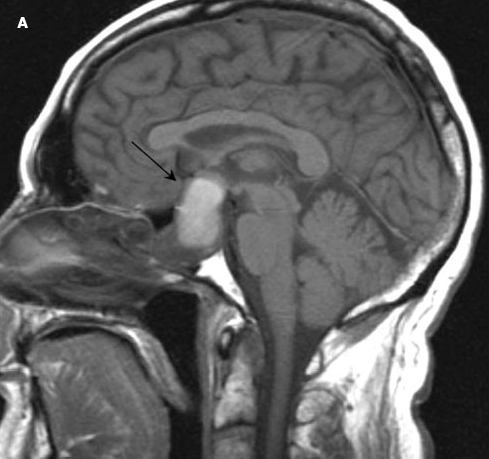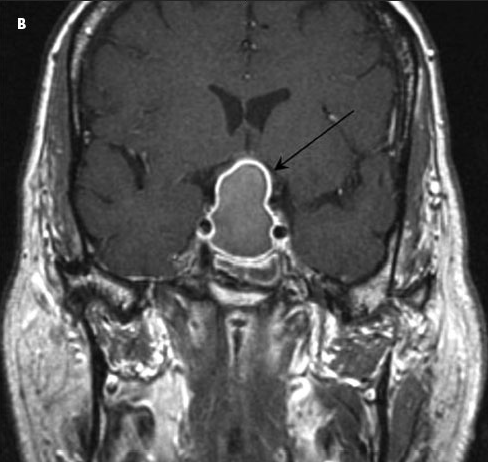Pituitary Apoplexy

Twelve days after coronary artery bypass graft surgery, a 56-year-old man presented with worsening fatigue and difficulty in reading. Before surgery, he had a long-standing history of hot flashes and decreasing stamina.
On examination, the patient had bitemporal hemianopia. The following serum levels were obtained: morning cortisol, 3.6 µg/dL (normal, 3.0 to 23.0 µg/dL); adrenocorticotropic hormone, 4 pg/mL (normal, 9 to 52 pg/mL); total testosterone, less than 10 ng/dL (normal, 280 to 1100 ng/dL); and thyroid-stimulating hormone, 0.13 mIU/L (normal, 0.35 to 5.00 mIU/L; the level before surgery was 4.17 mIU/L).
Because the patient exhibited signs and symptoms of panhypopituitarism after cardiac surgery, the likelihood of postoperative pituitary apoplexy was high on the differential. An MRI scan showed a large radi- opaque density in the sella, consistent with hemorrhage into an undiagnosed pituitary macroadenoma (A, arrow). A postgadolinium view showed enhancement (B, arrow) with extension into the suprasellar region and compression of the optic chiasm.

The patient's vision and overall condition improved with intravenous hydrocortisone treatment and surgical decompression. He was given replacement therapy with testosterone, levothyroxine, and hydrocortisone and will be followed up regularly.


